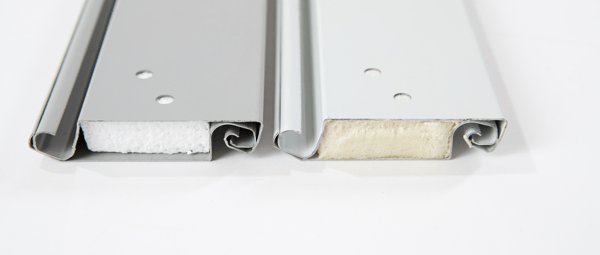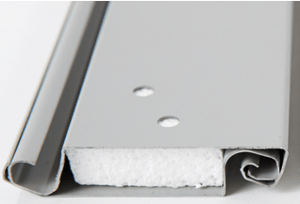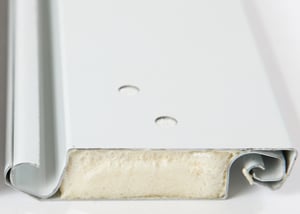Choosing the Right Insulation for Your Rolling Steel Doors
So you've decided you need insulation for your rolling steel doors, but aren't positive on which option is best? Don't worry! The difference between polystyrene and polyurethane can be confusing, but we're going to break down the differences for you here so you can make the best, most educated choice before your final purchasing decision.

Insulated rolling steel doors come with a variety of benefits that make the investment well worth it! These doors help with climate control, energy efficiency, product protection, cost savings and even noise reduction. This is especially important for buildings in intense climates, climate controlled environments, or for buildings handling important products that need a little extra protection and care.
If you'd like to learn more about the benefits that come with choosing insulation, check out our blog, 4 Benefits for Insulating Your Rolling Steel Doors.
Measuring the efficiency of your insulated Rolling Steel Doors
There are 3 important terms you'll need to know before we dive into the differences of polystyrene and polyurethane insulation. R-value, U-value, and STC rating. These terms are all responsible for measuring the efficiency of insulation.
R-value: Measures a materials ability to resist the conduction of heat flow, so the higher the R-value, the better!
U-value: Measures how much heat energy is lost or gained, so the lower the U-value, the better! Rather than an individual material, U-value measures a "unit", so this measurement takes into account the steel that encloses the insulation, not just the insulation itself. Because of this, people are starting to view the U-value as a more reliable and accurate measurement of insulation's efficiency.
STC Rating: The sound transmission class indicates how well a building partition attenuates airborne sounds. The better the insulation, the better the STC rating. Think about those LOUD warehouses and terminals with their heavy machinery... An insulated door with a high STC rating would minimize the noise pollution being produced.
The most common misconception among them: R-value is the best indicator of energy efficiency for insulated rolling steel doors.
Polystyrene Insulated Rolling Doors

This is a pre-formed pre-cut insulation known as laid-in-place (L-I-P) insulation, or more commonly known as Styrofoam. This insulation is slid into the groves between slats and enclosed in the center of the rolling steel door. Because this is a simpler and more traditional version of insulating your steel doors, it's typically less expensive. LIP insulation has the benefit of being very flexible because of it's design as well as not degrading or deforming overtime when enclosed in steel. However, since this is a pre-cut insulation, it leaves air pockets in the opening which contributes to a lower R-value.
POLYURETHANE INSULATED ROLLING DOORS

Also known as foam-in-place (F-I-P) insulation, polyurethane is sprayed into an area as a liquid and expands into a solid within seconds, filling the entire space that encloses it. This eliminates those air pockets, contributing to a higher R-value and delivering twice the thermal performance of polystyrene of the same thickness! This version is becoming more and more popular and is setting the new standard for insulated rolling steel doors by offering superior protection.
So how do you choose the right insulation for your Rolling Steel Doors?
Don't let choosing insulation for your rolling steel doors overwhelm you, it all just depends on product application. Polyurethane provides superior protection, but some people don't need that extra protection and can save on money by going with polystyrene.
Evaluate the environment you're going to be in, and decide what's desired for your daily operations. One things for sure, you'll never regret having an extra layer of protection - especially when that protection adds to multiple benefits including cost savings through energy efficiency!
Need more help on deciding on insulation for your rolling steel doors?
Check out our 600 series today for more details!
